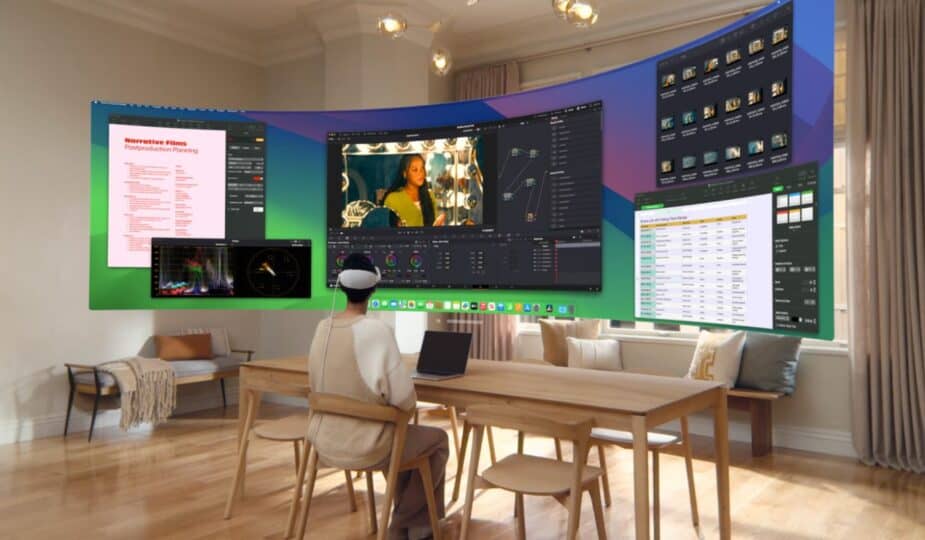
Vision Pro is approaching a year of life, and Apple’s next software update will bring some big changes that could change usage patterns. Mac Virtual Display, one of the Vision Pro’s best features, is getting three updates in visionOS 2.2 that provide a huge boost to spatial computing.
Wide and Ultrawide Display Modes
Since its launch, Mac Virtual Display has been one of the Vision Pro’s best features. But it wasn’t until visionOS 2.2 that it truly took advantage of Vision Pro’s unique strengths.
The current Mac Virtual Display feature lets you mirror your Mac’s screen in a spatial window in visionOS. But it’s only available in a very narrow rectangular shape. You can make that rectangle larger or smaller, but it’ll still have the same basic shape.
visionOS 2.2 introduces two new display modes — Wide and Ultrawide — that take advantage of the unique benefits of spatial computing.
Both new modes offer a much wider canvas to run all of your Mac apps. Since the space around you isn’t limited to the size of the average MacBook Air or MacBook Pro, it didn’t make sense to limit Mac Virtual Display to a traditional rectangular shape.
The wider capabilities of your Mac’s virtual display mean you can make better use of the width of your environment and do a lot more with Vision Pro at once.
High-quality display resolution
Another key change ensures that no matter which display mode you use, Vision Pro will make macOS look crisp and clear.
Display resolution with Mac Virtual Display is now better than ever. The upgrade to high resolution is a welcome change for users who feel like their existing resolution isn’t quite right.
visionOS 2.2 closes the resolution gap between content displayed in a native visionOS app and what you’ll find in a mirrored macOS app via Mac Virtual Display.
Routing audio to the right place
Finally, visionOS 2.2 also fixes a strange behavior that has existed since the Vision Pro debuted. Previously, audio for your mirrored Mac would be routed through the Mac itself, rather than the Vision Pro.
There were workarounds for this issue, like connecting AirPods Pro or another pair of Bluetooth headphones to your Mac. But that still wasn’t a proper solution, since Mac Virtual Display and your other visionOS apps would send audio through different outputs.
Now, Mac Virtual Display audio is routed through the Vision Pro itself. So whether you’re using the built-in speakers or AirPods, you can get a consistent audio experience across all your spatial computing.
Next-Gen Computing: Wrapping Up
It would be great if Mac Virtual Display didn’t actually require a Mac. Maybe one day it will. But for now, the updated Mac Virtual Display in visionOS 2.2 delivers a computing experience you can’t get anywhere else. It feels like next-generation computing, which is perhaps what “spatial computing” is all about.
Have you tried the updated Mac Virtual Display feature in visionOS 2.2? Let us know in the comments.
The Best Vision Pro Accessories
- Vision Pro Aluminum Stand
- Vision Pro Travel Case
- AirPods Pro 2 (now only $169, down from $249)
- Belt Clip Battery Holder and More









